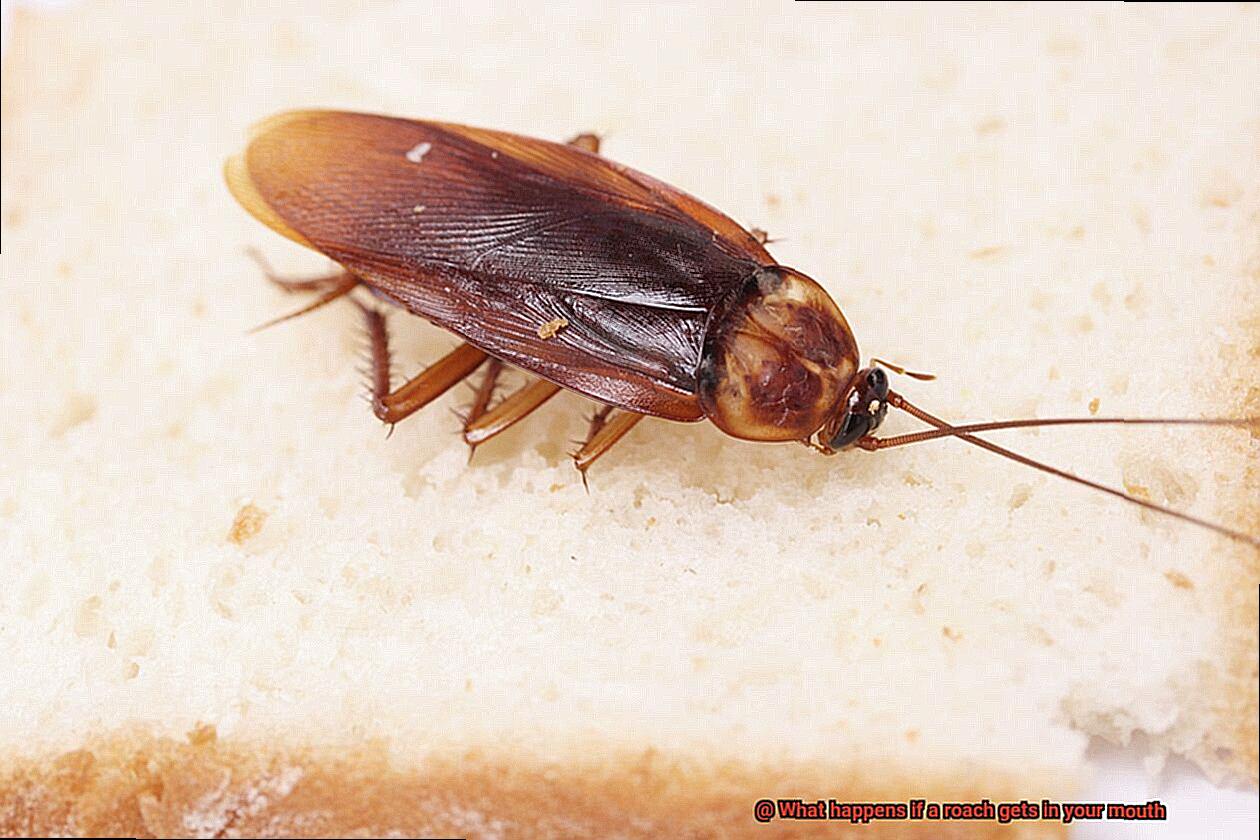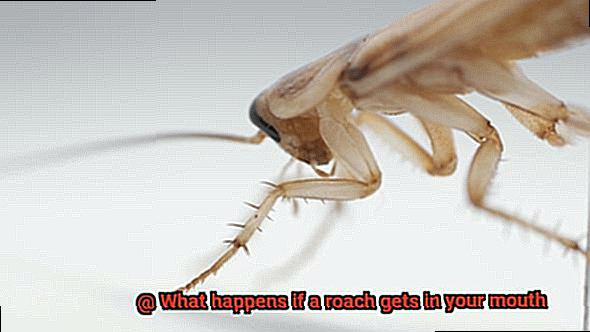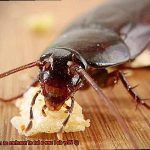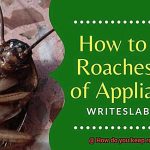Imagine this: You’re finally winding down after a long day, ready to relax and catch some Z’s. But then, out of nowhere, you feel a tickling sensation in your mouth. Panic sets in as you realize – a roach has crawled in. Your heart races and you feel like screaming. But what happens next?
Believe it or not, this nightmare scenario is more common than you might think. And knowing what to do can make all the difference. In this blog post, we’ll explore the consequences of ingesting a roach and what to expect if it happens to you.
We’ll take a closer look at the risks involved, including the harmful bacteria and diseases that cockroaches can carry. We’ll also discuss the potential physical harm that can result from inhaling or swallowing one of these creepy crawlies. Plus, we’ll share tips on how to prevent such an incident from happening in the first place.

So sit tight as we delve into the world of cockroaches and uncover what happens if they make their way into your mouth. It’s not for the faint-hearted, but knowledge is power when it comes to dealing with these pesky pests.
Health Risks of Swallowing a Roach
Contents
- 1 Health Risks of Swallowing a Roach
- 2 Symptoms to Look Out For After Swallowing a Roach
- 3 How to Remove a Live Cockroach from Your Mouth
- 4 Preventative Measures to Avoid Roaches Entering Your Mouth
- 5 When to Seek Medical Attention for Swallowing a Roach
- 6 Treatment for Infections Caused by Swallowing a Roach
- 7 Conclusion
Cockroaches are notorious carriers of harmful bacteria, viruses, and parasites that can cause serious health problems if ingested. Therefore, it is crucial to keep your living space clean and free of any food debris or crumbs that may attract these pesky insects.
If a roach does end up in your mouth, it can trigger a gag reflex or cause you to choke, which can be dangerous if you’re not able to cough it up. While it is likely that the roach will pass through your digestive system without causing any harm, if it was carrying harmful bacteria or viruses, they may survive and cause an infection once they reach your digestive tract.
One of the most significant concerns when it comes to swallowing a roach is the potential for food contamination. Roaches thrive in unsanitary environments such as garbage cans and sewers, which means there is a risk that they could contaminate your food or drink with harmful bacteria and pathogens.
Not only can swallowing a roach lead to food contamination, but it can also cause respiratory issues. Roaches carry allergens that can trigger asthma and other respiratory conditions, which could worsen pre-existing conditions.
In addition to these risks, there is also a chance of physical injury when swallowing a roach. Roaches have spiny legs and hard exoskeletons that could potentially cause damage to your throat or digestive tract if swallowed. In some cases, this could even require medical attention.
Symptoms to Look Out For After Swallowing a Roach
Swallowing a roach can be an unnerving experience, but the potential health risks that come with it are even more concerning. It is crucial to stay vigilant of the symptoms that may occur after ingesting a roach.
The most common symptoms to look out for include nausea, vomiting, diarrhea, and abdominal pain or discomfort. These symptoms can vary depending on the size of the roach swallowed and the individual’s tolerance. Additionally, difficulty swallowing may be another cause for concern.
Individuals may also experience an allergic reaction to the roach, resulting in hives, itching, and difficulty breathing. If these symptoms manifest themselves, immediate medical attention should be sought.
Bacterial infection is another significant risk associated with swallowing a roach. Roaches are known to carry bacteria such as E.coli and Salmonella, which can cause food poisoning and other illnesses. If fever, chills, or muscle aches occur after swallowing a roach, seeking medical attention is essential to rule out any bacterial infections.
How to Remove a Live Cockroach from Your Mouth
It’s a traumatizing experience that can leave you feeling scared and vulnerable. Whether it happened accidentally or not, removing the live cockroach from your mouth should be your top priority. But how do you do it? Here are five steps to help you safely remove a live cockroach from your mouth:
Step 1: Stay Calm and Don’t Panic
The first thing you need to do is remain calm and avoid panicking. Panicking can cause the cockroach to move deeper into your mouth or throat, making it harder to remove. Take deep breaths and try to relax.
Step 2: Spit Out Any Remaining Pieces of the Cockroach
If there are any remaining pieces of the cockroach in your mouth, try to spit them out. This will help get rid of any bacteria or toxins left in your mouth.
Step 3: Try to Grab the Cockroach Gently
If the cockroach is still alive, try to grab it gently using a pair of tweezers or forceps. Be careful not to crush it as this can release harmful bacteria and toxins.
Step 4: Seek Medical Attention if Necessary
If you cannot remove the cockroach yourself, seek medical attention immediately. A medical professional may need to use specialized tools to remove the roach.
Step 5: Take Preventative Measures
To prevent future incidents, keep your living space clean and free of food debris, seal any cracks or openings in walls or windows where cockroaches can enter, and use insecticides or traps to control their population.
Ingesting a cockroach can lead to potential health risks, including bacterial infections and allergic reactions. If you experience any symptoms after ingesting a cockroach, seek medical attention immediately.
Preventative Measures to Avoid Roaches Entering Your Mouth
Fear not, for we have compiled a list of the top 5 preventative measures to keep these creepy crawlies away from your mouth.
First and foremost, it is crucial to keep your surroundings clean and free of food debris. Cockroaches are attracted to food and moisture, so it is essential to clean up any spills or crumbs immediately and store food in sealed containers. By doing so, you can significantly reduce the likelihood of cockroaches being attracted to your living space.
Sealing any cracks or crevices in your home is also important. Cockroaches can enter through small openings in doors, windows, and walls, so use caulk or weather stripping to seal any gaps or cracks. This will effectively prevent cockroaches from entering your home and potentially finding their way into your mouth.
Using natural remedies such as peppermint oil or bay leaves is another fantastic way to repel cockroaches. These natural remedies are effective at keeping cockroaches away while also being safe for humans and pets. Place them in areas where cockroaches are commonly found, such as under the sink, near trash cans, and in cabinets.
Insecticides and baits are also helpful in controlling cockroach populations, but it is crucial to use these products safely and according to instructions. These products can be hazardous to humans and pets if not used correctly. Therefore, it is essential to handle them with care.
If you have a severe infestation of cockroaches in your home, it is best to hire a professional pest control service. They have the expertise and knowledge to effectively control the infestation while ensuring the safety of humans and pets.
When to Seek Medical Attention for Swallowing a Roach
It’s not only a gross thought but could also be a dangerous situation. While it may seem like a trivial matter, swallowing a roach can have serious consequences. So, when should you seek medical attention?
If you experience any symptoms such as difficulty breathing, chest pain, choking, or throat swelling, do not hesitate to seek medical attention immediately. These symptoms could indicate that the roach has caused an obstruction in your airway or throat, which can be life-threatening. Don’t wait for the situation to worsen; act fast and seek help.
In addition to the physical symptoms, you may experience allergic reactions such as hives, swelling, or severe itching. These could be signs of an allergy to roaches, and an allergic reaction can lead to anaphylaxis, which is a severe and potentially deadly reaction. Seek medical attention right away if you experience any of these symptoms.
Even if you don’t experience any immediate symptoms after swallowing a roach, it is still recommended to consult with a healthcare professional. They can provide guidance on whether any further action needs to be taken and monitor for any potential complications. Remember that prevention is key but accidents can happen so always trust your instincts and seek medical attention if needed.
Furthermore, if the roach was alive when swallowed and you are experiencing stomach pain or vomiting, it is also recommended to seek medical attention. In some cases, the roach may have laid eggs inside your body which can lead to an infection. Don’t take any chances and get checked out by a doctor.
Treatment for Infections Caused by Swallowing a Roach
Swallowing a roach can lead to harmful bacteria in your digestive tract, causing stomach pain, diarrhea, and vomiting. But don’t panic – there are effective treatments available.
Your doctor may prescribe antibiotics to kill off any harmful bacteria that may be present in your digestive tract. They may also recommend over-the-counter medications to manage symptoms like stomach pain and diarrhea. In severe cases, hospitalization may be necessary to monitor and treat more serious complications. But remember, prevention is always better than cure.
Keeping your home clean and free of roaches is the best way to prevent them from getting into your mouth in the first place. If you do find a roach in your home, don’t hesitate to take action. Use traps or insecticides and seal up any cracks or crevices where roaches may be able to enter your home.
Ah-0vxU9Kfw” >
Conclusion
If you happen to ingest a roach, it can be quite alarming. However, it’s crucial to know what steps to take if this does occur. Cockroaches are known carriers of harmful bacteria, viruses, and parasites that can lead to serious health problems if ingested. Swallowing a roach may trigger your gag reflex or cause choking, which can be dangerous if you’re unable to cough it up.
Although the chances are high that the roach will pass through your digestive system without causing any harm, it’s important to note that harmful bacteria or viruses carried by the roach may survive and result in an infection once they reach your digestive tract.
If you experience symptoms such as nausea, vomiting, diarrhea, abdominal pain or discomfort after swallowing a roach, seek medical attention immediately. Additionally, individuals may experience an allergic reaction resulting in hives, itching, and difficulty breathing.
To prevent cockroaches from entering your mouth altogether, make sure to keep your surroundings clean and free of food debris while sealing any cracks or crevices in your home. Natural remedies such as peppermint oil or bay leaves are also great ways to repel cockroaches while being safe for humans and pets.
In case you do find yourself in the unfortunate situation of swallowing a roach, stay calm and try removing the live cockroach gently using tweezers or forceps. If you’re unable to remove the cockroach yourself or experience any symptoms after ingestion – remember always to seek medical attention immediately.






